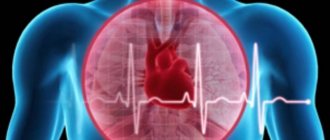Flexid, 5 pcs., 500 mg, film-coated tablets
Flexid® tablets must be taken 2 hours before or 2 hours after taking iron salts, zinc salts, sucralfate or didanosine (only those didanosine preparations that contain magnesium and aluminum as excipients), since a decrease in its absorption may occur.
In patients simultaneously taking indirect anticoagulants - coumarin derivatives, it is necessary to monitor blood clotting parameters.
In rare cases observed during treatment with quinolones, tendinitis can lead to rupture of ligaments, especially the Achilles tendon. This side effect occurs within 48 hours after the start of therapy. For older people and patients taking corticosteroids, there is an increased risk of developing tendonitis. Therefore, during treatment with levofloxacin, careful monitoring of the condition of such patients is necessary. If tendinitis is suspected (patients must be advised of its symptoms), Flexid® tablets should be stopped immediately and appropriate treatment (eg immobilization) initiated.
Diarrhea (especially if severe, persistent and/or bloody) during or after taking Flexid® tablets may be a symptom of a disease caused by Clostridium difficile,
the most severe form of which is pseudomembranous colitis. If pseudomembranous colitis is suspected, Flexid® tablets should be stopped immediately and symptomatic treatment (for example, oral vancomycin) should be given. In this condition, drugs that inhibit peristalsis are contraindicated.
For the treatment of nosocomial infections caused by P. aeruginosa
combination therapy is required.
During treatment with Flexid®, it is necessary to avoid direct sunlight and artificial UV radiation (solarium) to avoid the development of photosensitivity reactions.
It should be borne in mind that patients with a history of brain damage (stroke, severe TBI) may develop seizures; with glucose-6-phosphate dehydrogenase deficiency - the risk of developing hemolytic reactions.
Since levofloxacin is excreted mainly through the kidneys, monitoring of renal function as well as adjustment of the dosage regimen is required in patients with impaired renal function.
QT interval prolongation has been reported in patients receiving fluoroquinolones, including levofloxacin. When using fluoroquinolones, including levofloxacin, caution should be exercised in patients with known risk factors for QT prolongation: advanced age; disturbance of water and electrolyte balance (hypokalemia, hypomagnesemia); congenital long QT syndrome; heart disease (heart failure, myocardial infarction, bradycardia); simultaneous use of drugs that can prolong the QT interval.
In patients with diabetes mellitus receiving oral hypoglycemic agents (eg glibenclamide) or insulin, the risk of developing hypo-/hyperglycemia increases when using levofloxacin. Such patients require monitoring of blood glucose concentrations.
Sensory and sensorimotor peripheral neuropathy, which may have a rapid onset, has been reported in patients receiving fluoroquinolones, including levofloxacin. If the patient develops symptoms of neuropathy, the use of levofloxacin should be discontinued (minimizes the possible risk of developing irreversible changes).
Levofloxacin should be used with caution in patients with myasthenia gravis.
.
For severe community-acquired pneumonia caused by Streptococcus pneumonia,
Levofloxacin may not provide optimal therapeutic effect.
Levofloxacin may inhibit the growth of Mycobacterium tuberculosis,
therefore, a false negative result of a bacteriological test for tuberculosis is possible.
Impact on the ability to drive vehicles and perform other activities that require concentration and speed of psychomotor reactions.
During treatment with levofloxacin, dizziness, blurred vision, and confusion may occur, so caution should be exercised when driving vehicles and performing other potentially hazardous activities that require increased concentration and speed of psychomotor reactions.
Special precautions when disposing of unused medicinal products.
There is no need for special precautions when disposing of unused Flexid®.
Compound
One tablet of the antibiotic Flexid, depending on the form of release of the drug, may contain 256.23 mg. or 512.46 mg. levofloxacin hemihydrate (active drug compound).
As so-called excipients, the drug contains the following compounds: povidone, lactolose monohydrate, sodium carboxymethyl starch, talc, glyceryl dibehenate, anhydrous silicon dioxide (colloidal), as well as croscarmellose sodium .
Flexid's film shell contains yellow and red iron oxide, titanium dioxide, hypromellose and hyprolose, talc, and macrogol . The amount of the above listed excipients and compounds included in the drug shell also depends on the form of release of the drug.
Interaction
The absorption of the active medicinal compound contained in Flexid is reduced by substances such as aluminum, iron salts and magnesium. The bioavailability of the drug is reduced by sucralfate . In addition, the concentration of levofloxacin in the body increases by 13% when taking Fenbufen and Flexid simultaneously, which can lead to an overdose.
Flexid affects prothrombin time , i.e. on blood clotting when used in conjunction with drugs containing warfarin or vitamin K . In addition, this medicine increases the T1/2 level of cyclosporine .
Side effects
The following side effects may occur while using the drug:
- an allergic reaction, expressed in the appearance of itching, rash on the skin, shortness of breath, angioedema, anaphylactic shock, urticaria, pneumonitis, erythema, as well as Stevens-Johnson and Lyell syndrome ;
- diarrhea;
- nausea;
- loss of appetite;
- sleep disturbance;
- vomit;
- colitis;
- hypoglycemia;
- abdominal pain;
- enterocolitis;
- dispersion;
- dizziness;
- tremor;
- headache;
- lack of coordination;
- decreased vision and hearing , as well as loss of charm ;
- tachycardia;
- vascular collapse;
- convulsions;
- hypotension;
- arthralgia;
- muscle weakness;
- nephritis;
- hypercreatininemia;
- thrombocytopenia;
- anemia;
- asthenia;
- vasculitis;
- fever;
- rhabdomyolysis.
Indications for use
The medicine is indicated for use in infectious diseases that affect:
- ENT organs , for example, sinusitis ;
- kidneys;
- lower respiratory tract (pneumonia, bronchitis and others);
- urinary tract;
- skin and soft tissues;
- abdominal cavity.
In addition, levofloxacin is used in the complex therapeutic treatment of severe forms of tuberculosis .
Flexid, instructions for use (Method and dosage)
The dosage of the drug, as well as the schedule for its administration, varies depending on the type and severity of the disease, as well as the patient’s health condition. However, in accordance with the instructions for use of Flexid, the medicine is usually taken in 2 tablets of 250 mg. or 1 tablet of 500 mg once or twice a day.
For severe illnesses, the dosage of the drug can be increased to a maximum of 1000 mg. per day. For patients suffering from impaired renal function, an individual dosage schedule is used, which depends on the level of Cl-creatine . They start, for example, with a daily dose of 250 mg. Flexida, then after 24 hours take another 500 mg. active medicinal compound and the same amount after another 12 hours.
It is worth remembering that when using antacid medications , which contain sucralfate, iron salts and aluminum , Flexid should be taken at least two hours before or after the above-mentioned medications. The duration of the course of treatment is determined by the doctor, however, you should continue taking the drug for a maximum of 72 hours after the main symptoms of the disease disappear.
Release form
A drug such as Flexid is produced in tablet form. One biconvex antibiotic with a score on both sides of the drug, octagonal in shape and orange-pink in color, can contain a dosage of 250 and 500 mg. active compound levofloxacin.
One cardboard package of the drug can contain 1,2,3 or 5 blisters with 5,7 or 10 tablets containing 250 mg each. medicinal compound, as well as 1,2,3 and 5 blisters with 5,7, and 10 Flexid tablets of 500 mg. each.
Overdose
Symptoms of an overdose of this drug are:
- states of confusion;
- convulsions;
- nausea;
- tremor;
- loss of consciousness;
- hallucinations;
- erosion of the gastrointestinal mucosa.
To eliminate the consequences of an overdose of Flexid, patients are prescribed drugs belonging to the group of antacid drugs , and the dosage of the antibiotic or its use is completely stopped.
Pharmacodynamics and pharmacokinetics
Since levofloxacin is an antibacterial compound , the drug has bactericidal properties that have a wide range of applications. Flexid blocks topoisomerase, as well as DNA gyrase , thereby stopping the synthesis of new DNA .
It is worth especially emphasizing that this medicinal compound is active against the vast majority of harmful strains of viruses both in vivo and in vitro , i.e. both when tested in laboratory conditions and on living organisms, including humans. The drug is used to suppress the activity of gram-negative and gram-positive aerobic , as well as anaerobic microorganisms .
Flexid copes well with resistant, moderately sensitive, methicillin-sensitive, penicillin-sensitive and ampicillin-sensitive , as well as so-called hospital infections , including those requiring combined therapeutic treatment, for example, Salmonella spp., Pseudomonas aeruginosa, Serratia spp. and others.
During scientific studies, it was proven that due to the structural features of levofloxacin , the use of the drug compound together with other antimicrobial agents does not provoke cross-resistance . When used orally, Flexid is quickly and almost completely absorbed from the stomach.
its maximum concentration (Cmax) in blood plasma approximately 2 hours after direct administration of the drug. It is also noteworthy that meals have a very insignificant effect on the rate of absorption of the active drug compound by the gastrointestinal tract. The drug is quickly distributed in the tissues of the body, and then metabolized and excreted through the kidneys .
Contraindications
Absolute contraindications for Flexid include:
- hypersensitivity to quinolones , as well as levofloxacin ;
- deficiency of the lactase enzyme , which is involved in the process of lactose hydrolysis ;
- pregnancy;
- epilepsy;
- hereditary lactose intolerance;
- age up to 18 years.
This drug should be used with extreme caution when treating patients suffering from:
- diseases of the cardiovascular system;
- renal failure;
- diabetes mellitus;
- lack of glucose-6-phosphate dehydrogenase;
- seizures;
- circulatory disorders;
- porphyria.
In addition, it is worth monitoring the dosage of the drug and the schedule for taking it for elderly people and patients who, simultaneously with Flexid, are taking medications that affect the brain , for example, Ibufen or Theophylline , as well as drugs that interact with tubular secretion ( Cimetidine , Probenecid and others ).

